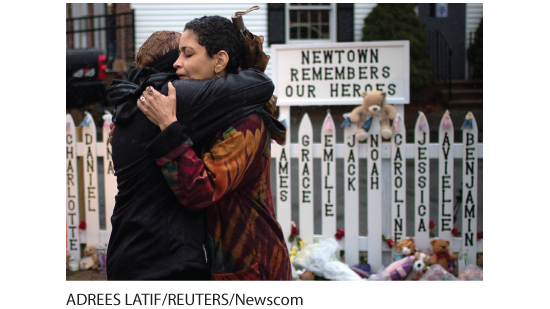Does Disorder Equal Danger?
September 16, 2013, started like any other Monday at Washington, DC’s, Navy Yard, with people arriving early to begin work. Then government contractor Aaron Alexis entered the building and began shooting. An hour later, 13 people were dead, including the shooter. Reports later confirmed that Alexis had a history of mental illness and had stated that an “ultra low frequency attack is what I’ve been subject to for the last three months. And to be perfectly honest, that is what has driven me to this.” This devastating mass shooting, like the one in a Connecticut elementary school in 2012 and many others since then, reinforced public perceptions that people with psychological disorders pose a threat (Barry et al., 2013; Jorm et al., 2012). “People with mental illness are getting guns and committing these mass shootings,” said Speaker of the U.S. House Paul Ryan (2015). In one survey, 84 percent of Americans agreed that “increased government spending on mental health screening and treatment” would be a “somewhat” or “very” effective “approach to preventing mass shootings at schools” (Newport, 2012).

How to prevent mass shootings? Following the Newtown, Connecticut, slaughter of 20 young children and 6 adults, people wondered: Could those at risk for violence be identified in advance by mental health workers and reported to police? Would laws that require such reporting discourage disturbed gun owners from seeking mental health treatment?
Do disorders actually increase risk of violence? And can clinicians predict who is likely to do harm? No. Most violent criminals are not mentally ill, and most mentally ill people are not violent (Fazel & Grann, 2006; Skeem et al., 2016). Moreover, clinical prediction of violence is unreliable. The few people with disorders who commit violent acts tend to be either those, like the Navy Yard shooter, who experience threatening delusions and hallucinated voices that command them to act, who have suffered a financial crisis or lost relationship, or who abuse substances (Douglas et al., 2009; Elbogen et al., 2016; Fazel et al., 2009, 2010).
People with disorders are more likely to be victims than perpetrators of violence (Marley & Bulia, 2001). According to the U.S. Surgeon General’s Office (1999, p. 7), “there is very little risk of violence or harm to a stranger from casual contact with an individual who has a mental disorder.” Psychological disorders only rarely lead to violent acts, and focusing gun restrictions only on mentally ill people will likely not reduce gun violence (Friedman, 2012). Better predictors of violence are use of alcohol or drugs, previous violence, and gun availability. The mass-killing shooters have one more thing in common: They tend to be young males.
Whether people with mental disorders who turn violent should be held responsible for their behavior remains controversial. U.S. President Ronald Reagan’s near-assassin, John Hinckley, was sent to a hospital rather than to prison. The public was outraged. Others were outraged in 2011, when Jared Lee Loughner killed six people and injured several others, including U.S. Representative Gabrielle Giffords. Loughner was diagnosed with schizophrenia but nevertheless sentenced to life in prison without parole.
Which decision—hospital or prison—was correct? “My brain . . . my genes . . . my bad upbringing made me do it.” Such defenses were anticipated by Shakespeare’s Hamlet. If I wrong someone when not myself, he explained, “then Hamlet does it not, Hamlet denies it. Who does it then? His madness.” Such is the essence of a legal insanity defense, which asserts that the defendant cannot be held responsible for a criminal act. “Insanity” is a legal rather than a psychological concept, created in 1843 after a deluded Scotsman tried to shoot the prime minister (who he thought was persecuting him) but killed an assistant by mistake. Like Hinckley, Daniel M’Naghten was sent to a mental hospital rather than to prison. In both cases, the public was outraged. “Hinckley Insane, Public Mad,” declared one headline.
As we come to better understand the biological and environmental bases for all human behavior, from generosity to murder, when should we hold people accountable (or not) for their actions? In these situations, psychology and the legal system often work together. Mental health practitioners may be asked to interview and assess offenders and provide their expert opinions, or to discuss an existing client, which may be done only with the client’s approval. (When a person sees a therapist, confidentiality about those sessions is generally assured by the strict rules of the therapist-patient privilege.) With this information in hand, judges and juries can make more informed decisions about personal responsibility and accountability.